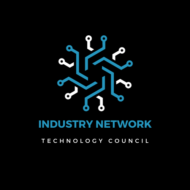The agenda topics for this class include:
- DHCPv6 Modes
- DHCPv6 Relay
- Address Allocation
- Basic commands: Client
- Basic commands: Server / Relay
- Prefix ‘Hints’
Nalini Elkins & Mohit P. Tahiliani
The agenda topics for this class include:
- DHCPv6 Modes
- DHCPv6 Relay
- Address Allocation
- Basic commands: Client
- Basic commands: Server / Relay
- Prefix ‘Hints’
Nalini Elkins & Mohit P. Tahiliani
Enterprises rarely switch over from IPv4 to IPv6 in one step. Generally, companies will run dual-stack for a time, where both IPv4 and IPv6 are available on devices. This doesn’t solve most of the problems IPv6 was designed to solve, so we will discuss the benefits and drawbacks of:
- Dual-stack
- NAT44
- Dual-stack Lite
- NAT64/DNS64
- 464xlat
- MAP-T
- MAP-E
- IPv6-Only
Nalini Elkins & Michael Ackermann
Enterprises rarely switch over from IPv4 to IPv6 in one step. Generally, companies will run dual-stack for a time, where both IPv4 and IPv6 are available on devices. This doesn’t solve most of the problems IPv6 was designed to solve, so we will discuss the benefits and drawbacks of:
- Dual-stack
- NAT44
- Dual-stack Lite
- NAT64/DNS64
- 464xlat
- MAP-T
- MAP-E
- IPv6-Only
Nalini Elkins & Michael Ackermann
The agenda topics include:
- Discuss how a good address plan makes security and routing policy easier,
- Consider numbering your LAN segment, SSID, or VLAN,
- Consider numbering for sites, backbone, links,
- Consider how to remember your addresses for diagnostics and troubleshooting, and
- Look at plans that other enterprises have done.
Nalini Elkins & Michael Ackermann
The agenda topics include:
- Review the important prefixes needed for an IPv6 address plan,
- Discuss how a good address plan makes security and routing policy easier,
- Consider numbering your LAN segment, SSID, or VLAN,
- Consider numbering for sites, backbone, links,
- Consider how to remember your addresses for diagnostics and troubleshooting, and
- Look at plans that other enterprises have done.
Nalini Elkins & Michael Ackermann
The agenda topics include:
- Stateless Autoconfiguration
- ICMPv6
- Neighbor Discovery
- Neighbor Solicitation / Advertisement
- Router Solicitation / Advertisement
- Multicast Listener Discovery
Nalini Elkins & Michael Ackermann
The agenda topics include:
- Stateless Autoconfiguration
- ICMPv6
- Neighbor Discovery
- Neighbor Solicitation / Advertisement
- Router Solicitation / Advertisement
- Multicast Listener Discovery
Nalini Elkins & Michael Ackermann
To be successful in implementing and understanding IPv6 networks, you need to first understand the IPv6 address methodology which is, in many ways, a fundamental change from the IPv4 paradigm. In this introduction, you will become familiar with what is different as well as what is the same with IPv6.
- Public and private addresses
- IPv6 Prefixes
- IPv6 Address Structure
- IPv6 Interface ID
- IPv6 Addressing and Address Allocation Methods (stateless, statefull)
- Address types, unicast, multicast, anycast
- Address categories: global, site local, link local
- Unique Local Unicast addresses
- Zero compression
- Special addresses (loopback, unspecified, IPv4 mapped IPv6)
- Broadcast address elimination
This webinar will be followed by a hands-on lab to illustrate the concepts shown. You do not need any equipment to participate. We will send full instructions so that if you wish, you may do the same commands / exercises but this is entirely optional.
Presented by Nalini Elkins.
To be successful in implementing and understanding IPv6 networks, you need to first understand the IPv6 address methodology which is, in many ways, a fundamental change from the IPv4 paradigm. In this introduction, you will become familiar with what is different as well as what is the same with IPv6.
- Public and private addresses
- IPv6 Prefixes
- IPv6 Address Structure
- IPv6 Interface ID
- IPv6 Addressing and Address Allocation Methods (stateless, statefull)
- Address types, unicast, multicast, anycast
- Address categories: global, site local, link local
- Unique Local Unicast addresses
- Zero compression
- Special addresses (loopback, unspecified, IPv4 mapped IPv6)
- Broadcast address elimination
This webinar will be followed by a hands-on lab to illustrate the concepts shown. You do not need any equipment to participate. We will send full instructions so that if you wish, you may do the same commands / exercises but this is entirely optional.
Presented by Nalini Elkins.
